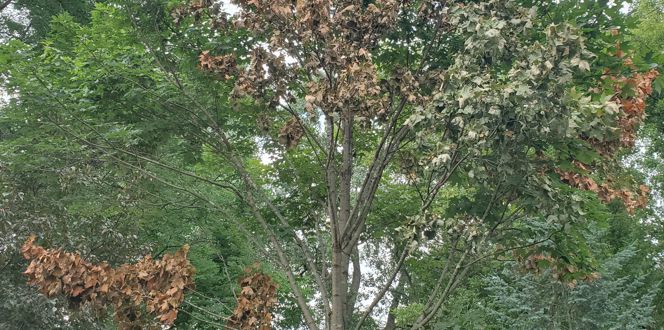Ever looked at your tree and thought something’s missing?
That’s just what happened to one Davey blog reader who reached out about two sparse-looking trees in her yard. She said, “We have one plum and one dogwood tree that have begun to have empty spots with no leaves at all, but other areas have leaves. Is there some way to save them?”
Let’s get into the potential reasons why this reader’s trees, and your trees, might have leafless spots.
What does it mean if my tree has empty spots?
Trees with empty spots could be battling an insect infestation. Or responding to unexpected weather change. Or reacting to soil issues. Sense a theme here? Yep, this question can be a tough one to answer because all trees are different, and a number of outside factors can rob them of a full canopy.
To get to the bottom of your tree’s dilemma, look past the missing leaves for telling symptoms.
Three causes of canopy thinning
If your tree has bare spots, it might be because of:
- Borer insects: These discreet beetles or caterpillars chew their way through tree bark, leaving spurts of tiny holes in the trunk. The annoying gnawers weaken the tree as they feed, which can cause empty spots in the canopy.
- Weather-related stress: Brutally cold weather can shock some parts of the tree more than others. Areas with sparse leaves may be struggling to recover from winter elements.
- Cramped soil: Compacted soil, or soil that gets packed too tightly together, can stunt tree growth in some areas.
How to treat canopy thinning
Healthy trees are much less likely to have bare spots. So, proper care like watering during dry periods and layering tree beds with a 2-to-4-inch layer of mulch helps a bunch.
But, it’s just as important to pinpoint why your particular tree is struggling. Even if you have a hunch—those borer insect holes really give it away!—it’s hard to accurately diagnose your tree and arrive at the right solution on your own.
That’s where a professional arborist comes in. Arborists help you avoid a guessing game by inspecting your tree and recommending a solution that’ll meet its specific needs.







